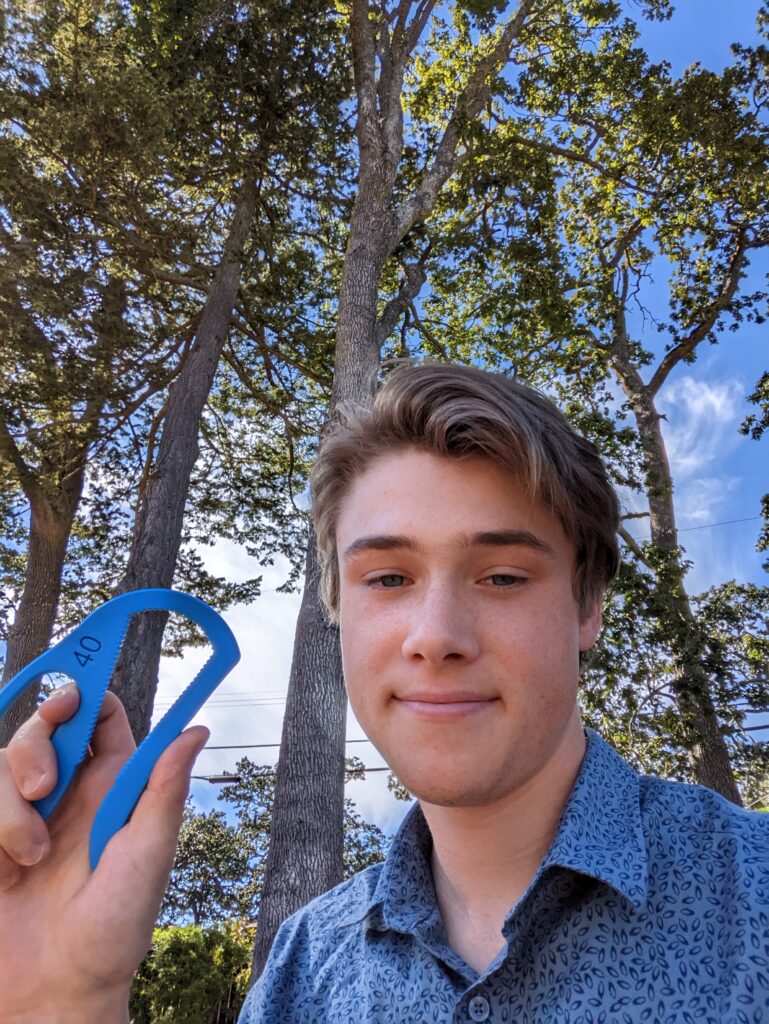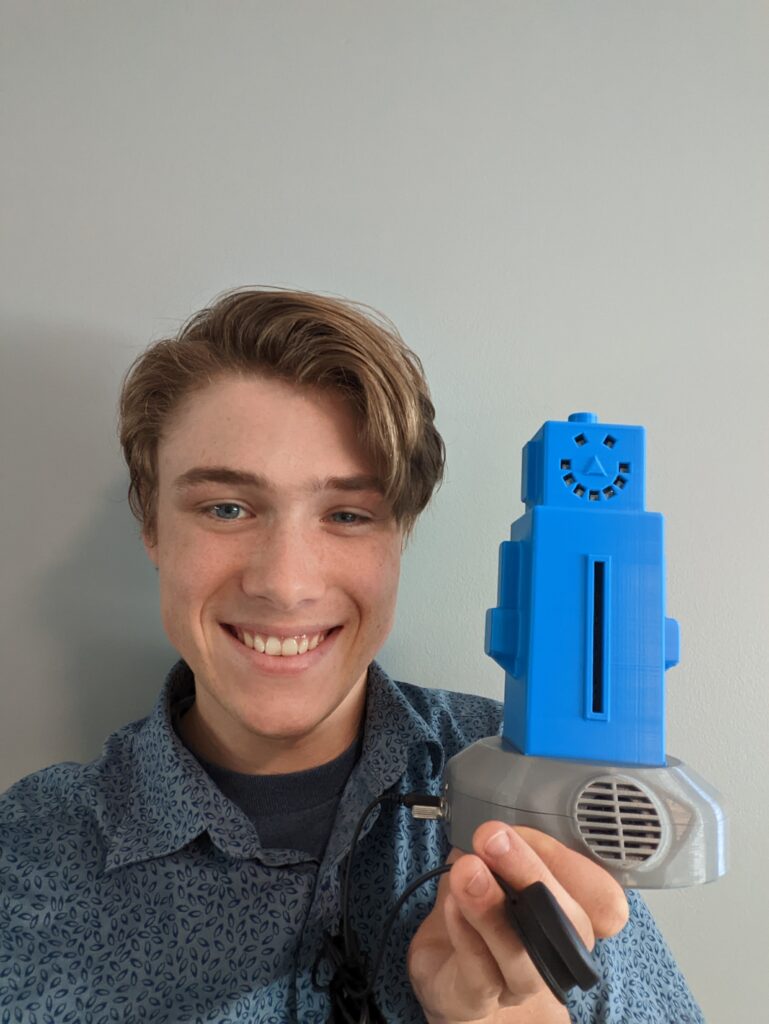When not playing guitar with his band, Taz spent much of his time in high school in Courtenay, BC at the school’s robotics club.
 “In high school, I spent more time in a robotics club than I actually spent studying,” he laughs.
“In high school, I spent more time in a robotics club than I actually spent studying,” he laughs.
“I just love building things, honestly, making things work is exciting. I just constantly have ideas for how to build things, and I just always love that process of starting from nothing and having something working at the end.”
So, after his first year of mechanical engineering at the University of Victoria, a co-op opportunity with Makers Making Change (new window) stood out to him — a chance to design devices, make them actually work, and best of all help make a difference in the lives of people with disabilities.
“I’ve always just wanted to make a positive change with my work, and Makers Making Change seemed like a really neat opportunity to do that,” Taz says.
During his time as a Mechanical Engineering Intern with Makers Making Change, Taz has made a big impact.
One of his first projects was updating the design for the Bottle Opener (new window). While the original design worked well, a device user had noted that the design only fit one size of bottle, prompting a design refresh.
“My girlfriend and I went to the store, and we measured with calipers every single bottle in the store,” he laughs. “And they all kind of fit into about five sizes.”
With that information, Taz created five sizes of print designs — each with the number corresponding to the diameter printed on the device — and created a chart that device users can print out and use to determine which Bottle Opener they need to open their bottle. (He also removed a can opener function that didn’t work well, and could poke into the users hand).
He worked on uploading can opener designs to the Makers Making Change library, creating documentation so makers could easily print the designs and potential device users could learn how it could help their needs. He also designed a can opener himself, a customizable device shaped almost like a whistle, that will be added to the library soon.
 But his main focus over the last couple months has been the OpenAT 3D printed toy, maker-friendly switch compatible toy with multiple, selectable options for stimulation, with light, sound, and movement.
But his main focus over the last couple months has been the OpenAT 3D printed toy, maker-friendly switch compatible toy with multiple, selectable options for stimulation, with light, sound, and movement.
The toy has a 3.5 mm jack (new window) and connects to assistive switches, and will feature a modular base with multiple different toy toppers that change the design of the toy depending on the interests of the child.
While Makers Making Change current switch adapts commercially available toys, this 3D printed toy will provide a lot more customizability, and helps eliminate the difficulty of sourcing some toys.
“No one has to worry about finding the right toy, the toys going out of stock, the toy being discontinued,” he explains. “This one will always be a standard toy that people will have access to.”
For Taz, working with Makers Making Change has been a great learning experience, particularly in 3D printing and making designs that others can easily replicate. The chance to make a difference in peoples’ lives has been a great experience, as well.
“It doesn’t really feel like work anymore when I’m helping someone,” he says.
This fall, Taz returns to the University of Victoria to continue his engineering degree. While he hasn’t decided his future career yet, he wants to continue making a difference, with interests in biomedical engineering and continuing working with assistive devices, as well as using his skills to help the environment. (He currently is involved with a UVic engineering club, where they are designing a device to clean microplastics from the ocean).
“Big thanks to everyone on the Makers Making Change team, I’ve really enjoyed my time here. It’s been a big learning experience that I’ll take with me for the rest of my life,” he says.
This post originally appeared on the Makers Making Change (new window) website.
